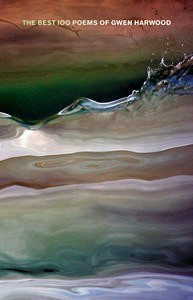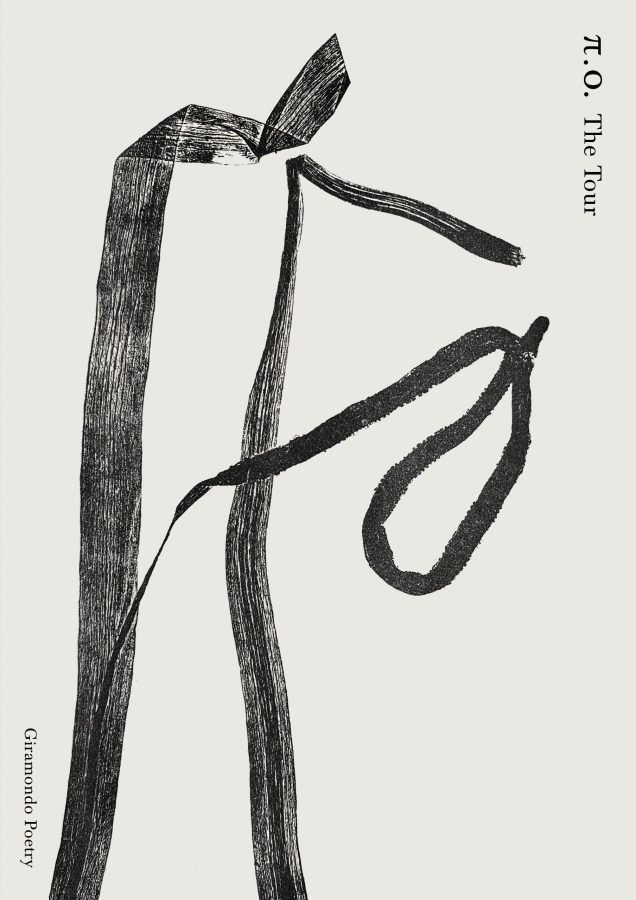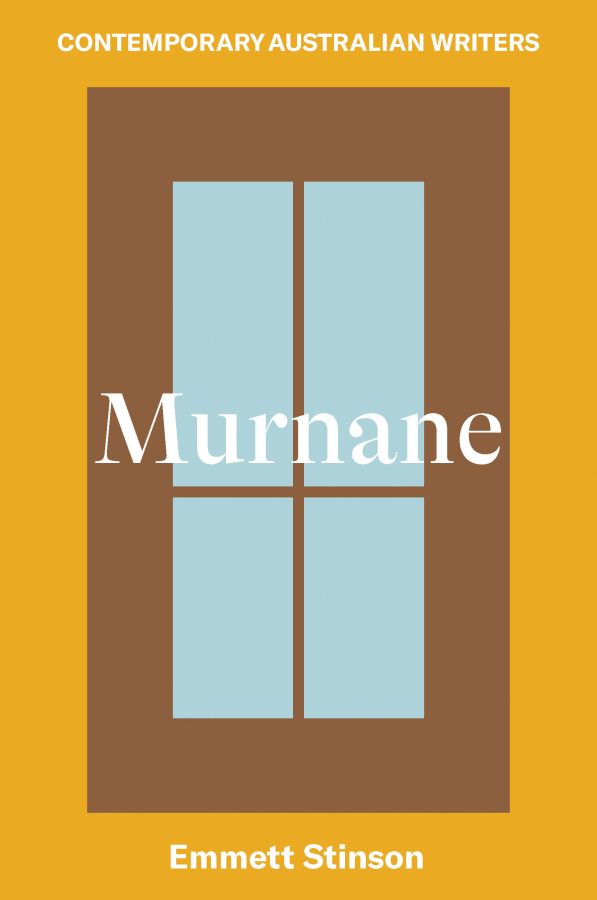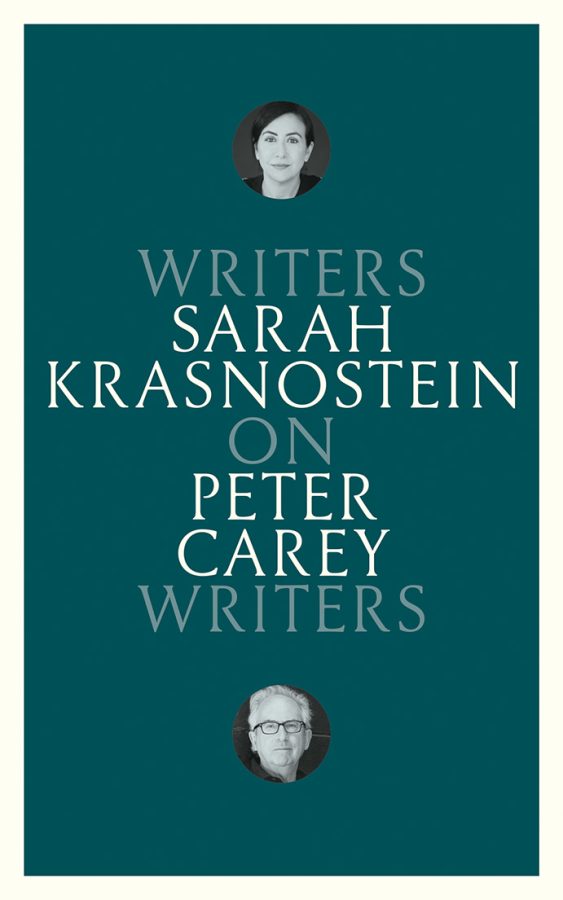In August 1961, the Melbourne newspaper Truth ran the headline GREAT POEM HOAX: HOUSEWIFE FOOLS THE EXPERTS WITH HER NAUGHTY SONNETS. The page three article began:
A Tasmanian poet-housewife has become the centre of a literary storm because of two sonnets she sent to a magazine as a hoax. The sonnets concealed a message – and a rude word – in words from the first letter of each line. The poet is Mrs Gwen Harwood, of Hobart, wife of a University Tasmania lecturer … The first sonnet said ‘So long, Bulletin’. The second gave an earthy and uncomplimentary opinion of all editors.
A similar piece in the Daily Telegraph stated:
The mother of four schoolchildren said she does not write poetry as a hobby, and added ‘I am a serious poet’.
Housewife or serious poet? What was Harwood? The acrostic in question, with its opening ‘So Long, Bulletin’, suggests a valedictory gibe after a rich and varied literary career. The reality was that Gwen Harwood, aged 41, had not yet published a volume of poetry. She had attracted the attention of James McAuley and A. D. Hope with a handful of poems published in the Bulletin and Meanjin, but for most Australians, including those whose news came from sources other than Truth or the Daily Telegraph, her name was a mystery. The fracas that ensued threw her into the spotlight. While she would go on to publish six major collections, and to hold a place among the best Australian writers of her generation (for Peter Porter she was ‘the outstanding Australian poet of the twentieth century’), this early incident would continue to mark her career.
50 years later the So Long Bulletin hoax seems a storm in a teacup, sadly indicative of the period’s provincialism and prudishness. At the time, however, it became rather nasty. The Bulletin issue was recalled, and there were angry responses in the literary and wider press. There were rumours of legal repercussions. After all, Harwood was guilty of sneaking into print the same word which had been the focus of charges of obscenity against Lady Chatterley’s Lover when the unexpurgated edition was released in 1959. Though, as she wrote to her lifetime confidant Tony Riddell,
It would be interesting to see the lawyers prove that the sonnets contained obscene material; I don’t suppose British law provides for vertical readings of poetry. If only you were here to laugh about this, but I do feel pretty much on my own and pretty much abandoned by the poets; nobody has written to thank me for drawing attention to the need for editorial competence.
In the tradition of Ern Malley, the two sonnets in question, ‘Eloisa to Abelard’ and ‘Abelard to Eloisa’, were written to test the prowess of editors. Harwood maintained they had a limited value as poetry, and never republished them. They appeared under the pseudonym of Walter Lehmann. Harwood had begun to experiment with pseudonyms in 1959, using the addresses of friends and her mother to elaborate the ruse. The first was W. W. Hagendoor (an anagram of her own name), whose work was never published. Other names followed, each with a life story and character traits: Walter Lehmann and Francis Geyer (both published repeatedly in the Bulletin until discovered), and then Miriam Stone. Harwood would eventually include some of their poems in her first two collections under her own name. However, poems first published under a later pseudonym, Timothy Kline, were not republished by Harwood. More recently, two poems published under the name of Alan Carvosso have surfaced.
A number of explanations have been given for the pseudonyms and their importance in Harwood’s work. One of the primary reasons was the desire to test the waters of the Australian literary scene, and fathom that deepest of mysteries, the judgement of editors. It is worth remembering that the pseudonyms pertain to the period before she had established herself as a poet. Her letters, which document so beautifully her struggles to make a name for herself, reveal a degree of youthful naivety about the world of letters. In 1960, she wrote to Tony Riddell:
No wonder I’m becoming a raving paranoiac. Enclosed is a copy of the innocuous ‘All Souls’. WHY WHY WHY does McA[uley] reject the intricate fusion of ‘Sunday’ and take this undistinguished piece? It is beyond my mental powers to follow an Editorial train of thought of this kind.
The idealist in Harwood seems to be crying out, ‘how dare our literary elders be so wayward in their judgement, and so far from perfect’. What factors lay behind the acceptance or rejection of a poem? Would she have more chance at publication if she wrote as a man (aside from Miriam, all her pseudonyms were male), or as a north-European refugee, or if the postmark on the letters came from some godforsaken place like Orange? If she had recalled Doctor Johnson’s remark that while an author is yet living we estimate his powers by his worst performance, and when he is dead we rate them by his best, her outrage may have turned earlier into cynicism, and Walter Lehmann might never have been born. As it was, Lehmann’s acrostics would show up editors who were ‘probably reading sideways as usual’.
If outrage was a strong motivation, there were other reasons for the masks. Certainly they reveal a youthful desire to experiment, and an anxiety about finding a voice that is recognisable. In 1961, Harwood wrote to Hope:
I am running another poet who has appeared in Meanjin, Quadrant and the Bully. Can you pick me out behind the mask?
Behind this question, she seemed to be asking: do I have a poetic voice of my own? How narrow or how wide can I range and still be me? In hindsight, her multiple voices are coherent, and her decision to republish some of the pseudonymous poems in her first two books under her own name seems perfectly reasonable. It would be wrong to consider Harwood some sort of antipodean Pessoa.
Finally, it should be remembered that Harwood loved writing in character and did it very well. Her lyric and meditative bent is regularly emphasised, but she was equally a poet of short narrative and adopted voice. The Kröte poems, for example, and those of Professor Eisenbart, develop two characters as lively as anything in Browning.
Kröte is drunk, but still can play.
Knick-knacks in shadow boxes wink
at gewgaws while he grinds away
at Brahms, not much the worse for drink.The hostess pats her tinted curls.
Sees, yawning surreptitiously,
a bitch in black with ginger pearls
squeezing the local tenor’s knee.(‘At the Arts Club’)
The social satire and playfulness of Kröte is a world away from one of her most popular pieces, ‘Barn Owl’, though this too shares a narrative drive and a totally imagined scenario. Harwood explained in a letter that she had never killed an owl, unlike the first person narrator here:
My first shot struck. He swayed,
ruined, beating his only
wing, as I watched, afraid
by the fallen gun, a lonely
child who believed death clean
and final, not this obscenebundle of stuff that dropped,
and dribbled through loose straw
tangling in bowels, and hopped
blindly closer. I saw
those eyes that did not see
mirror my crueltywhile the wrecked thing that could
not bear the light nor hide
hobbled in its own blood.
My father reached my side,
gave me the fallen gun.
‘End what you have begun.’
A particularly interesting case in any discussion of Harwood’s disguises is the poem ‘The Sentry’, which appeared in her first collection Poems (1963) under her own name. It was written by Vincent Buckley, once again as a literary joke. According to accounts in Harwood’s letters, the incident unfolded something like this. At a supper party in Hobart, Buckley was complaining about an unfavourable review Leonie Kramer had written of a book by Evan Jones. As Kramer had been appointed editor of Australian Poetry for that year, Buckley suggested sending in fake poems in revenge. Harwood reports the conversation thus:
Vincent: Someone should send her some fake poems.
Jim [McAuley]: Well I’ve done my share of that; no more for me after Ern Malley.
Vincent: How about you Gwen?
Gwen: Ok. I’ll write yours for you.
Vincent: And I’ll write yours.
And so he did. Buckley’s parody of Harwood’s style contains such lines as
or perhaps the sun falling without sound
rushed in the turning centres of his eyes
while heat melted the snowman of his will.
So it was with a mixture of consternation and delight that she wrote to Buckley in 1962, when the poem had been accepted under her own name, not only for publication, but republication in the yearly best of anthology,
Dear Vin,
I don’t write to importune
or solicit attention, I swear;
I wish to announce the good fortune
which you, in a fashion, should share.
Remember a poem, ‘The Sentry’ –
distinguished in content and style?
Through the gates of Aust. Lit. it made entry
then sank to oblivion a while.
Some heads are no bigger than buttons,
but yours, though of usual size
may swell: an anthology (Dutton’s)
has captured the poem as a prize.
Is it yours? It is mine? Or the Muse’s
Whose hand drove the talented pen?
With the right hand that never refuses
a guinea, I signed it.
Yours Gwen.
I don’t know what we are to make of Harwood’s decision to publish it again in Poems (1963). A continuation of the game with Buckley, perhaps? A desire to be more closely linked to the better-known poet and professor? Certainly, for a long time Harwood did not know where she stood with Buckley. She suspected that he had been responsible for pointing out the acrostic to the Bulletin in the first place, and then fomenting the hysteria which followed to his own advantage (he became the new poetry editor of the Bully not long after). They remained life-long friends.
Thankfully, the primness of the public reaction to the So Long Bulletin hoax now seems a long way in the past, though it is debatable whether the quality of our literary editors would impress Harwood today. But until late in her life she would battle to be taken seriously as a poet, and not just a housewife dilettante with a childish voice (‘my voice is a terrible handicap’, she wrote in 1960), just as she would continue to struggle to find sympathetic ears for her mixture of earnestness and wicked humour. 25 years after the hoax, while Harwood was in hospital, a junior doctor, who had been conferring in hushed tones with his senior colleague before entering her room, on finishing his examination boldly asked the elderly lady, ‘By the way, what’s an acrostic?’
Harwood was born Gwendoline Nessie Foster in 1920 in Brisbane, where she spent a childhood that she liked to describe as blissfully happy. Within a few months of the end of World War Two, she moved to Hobart, where her new husband, Bill Harwood, had just taken up a lectureship at the University of Tasmania.
Nineteen forty-five. I have been sick
all the way from Brisbane; first time in the air.
My husband’s waiting in civilian clothes.
Another name now. All those burning glances
cancelled, all those raging letters burned.(‘1945’)
Another 21 years were to pass before she revisited the mainland, and she would live in Tasmania for the rest of her life, despite its differences from the Eden of her youth:
I can never express my loathing for Hobart. For me the place is a creeping misery. It eats one’s will away.
Harwood liked to insist that her life had been uneventful. To A. D. Hope she wrote, ‘I have lived a quiet domestic life with four children’. But the reality is she, in effect, had to juggle three careers: that of mother, that of a secretary in a doctor’s surgery, and the secret one of poetry (she composed largely in her head, and her teenage daughter once declared that she had scarcely seen her mother write a line of verse). She seems to have oscillated between frustration that she did not have more time for poetry and feeling grateful for that persona of housewife, which protected her from the literary world and its cast of hyper-inflated egos.
When people tell me I’m a genius I reach for the All-Bran. Sauce is fine but you need bulk. That kind of talk makes me nervous and eager to get behind a mask.
Mask, or reality check, the role of Tasmanian housewife had a grounding effect, but it could also offer perspective on the creative process:
Children are better than the best poems, but poems are good too. Of course I shall always be able to write something, but technical skill is nothing without the passion of creation – ‘the internal ceremony of creation’. I’m glad I have the children: they’ll stop people saying, when the book comes out, ‘O she’d never write all that mad stuff if she had a family to look after’.
This passage from her letters is typical in the way that it runs with various strands of thought simultaneously. If we are warranted in detecting an inherent fear of the expectations of others in the final comment, then it is even more admirable that Harwood also found ways to describe her resentment at being trapped in the role of mother, at a time when doing so was frowned upon as a sign of ingratitude. Her widely anthologised sonnet ‘In the Park’ describes an exhausted mother sitting on a park bench while her two children bicker around her. It ends with the line, ‘To the wind she says, “They have eaten me alive”’. It is characteristic of Harwood that she played with disassociating herself from, and then embracing, these sentiments, like a yoyo that she drew in and out on a string. It is often forgotten that ‘In the Park’ was first published under the name of Walter Lehmann – as if to distance it from her own voice. But in a letter to Buckley in 1962 she writes, ‘I have a short time before the children come home for the May holidays and start eating me alive’. In this more intimate context, with a possible hint of irony, she can adopt the idea more readily.
Then, of course, there is her late sonnet which begins:
She sits in the park, wishing she’d never written
about that dowdy housewife and her brood.
Better, the Memoirs of a Mad Sex-Kitten
Or a high minded Ode to Motherhood
in common metre with a grand doxology.(‘Later Texts’)
And thus one never knows where the real Gwen Harwood stands. There is a continual shifting of roles, donning of masks, and, aided by her sharp wit, an undermining of the restrictive expectations of the society around her.
In this sense, Harwood is of her time as a modern poet. But she was also able to declare more courageously than many of her contemporaries that, ‘Poetry is a way from one mind to another’. Paul Kane has noted that few poets inscribe as many poems to others as Gwen Harwood. Poems such as ‘An Impromptu for Ann Jennings’ and ‘At Mornington’ discuss recurrent themes of friendship, music and time with such a personal note, with an intimacy and (dare one say it) sincerity, that they read like private letters.
Harwood was one of Australia’s great letter writers. Many readers will know her early missives to Tony Riddell from Brisbane, collected in the volume Blessed City (1990), but she continued to write regularly to a small circle of friends throughout her life. It is hard to underestimate the damage that may have been done to our ways of being in the world as a result of the loss of the genre of letter writing. We have so few written forums in which to reflect on ourselves to another individual, and we have become coy about signing anything ‘yours sincerely’ or ‘truthfully’ or ‘whole-heartedly’. The formula that has come to dominate emails – ‘best’ – is vacuous by comparison, and indicative of the functional and impersonal nature of electronic correspondence. The letter, by contrast, offers a space in which to recount the quotidian nature of being, and the slow accretion of experiences and emotions that form a life. In this context, Harwood’s letters stand as models, and deserve to be better known. I can’t help feeling she was more at ease in this genre. Sometimes you get the impression that in her poetry the complexities involved in juggling a host of public and private personae (the Tasmanian Housewife with the childish voice quoting Wittgenstein), the name-shifting and unmasking, were a distraction. There is a clarity and concision of expression in the letters, coupled with wit and playfulness, that is very endearing. To Edwin Tanner she writes:
I promise myself that I’ll write long ones in return as soon as I have washed the dishes, but in fact I am generally so tired after dinner that I just long to curl up in Plato’s cave and watch the flickering images.
It is as if she trusts her audience in a way she can never do when a poem is sent to one of those fickle editors, and then out to unknown readers. When she signs off ‘yours sincerely’ or ‘yours with warm quixotry’, you feel she means it.
‘Spilling the days no memory will restore / time’s fountain climbs its own perpetual core’, she writes at the end of a poem called, significantly, ‘A Postcard’. Against this waste, it is her letters that stand defiant. ‘How little time we’ve spent together in the 35 years since 1942, how much time we’ve kept forever in our letters,’ she wrote to Riddell in 1977.
One of the striking things about Harwood’s poetry is how resistant it is to categorisation into schools or movements. She refused to be seen as a Tasmanian or Australian poet, or for that matter as a female poet: ‘there’s just poetry, whoever has written it’. ‘One of the difficulties about being a woman poet,’ she declared in an interview in 1975,
is that there is no way to address the Muse … it is easy for men to write poems to the Muse because she can be a kind of composite, a wife or mistress, a lover, an inspirer, but to whom do women speak?
In could be argued that one of the ways Harwood overcame this was to write from male perspectives, as she does in ‘The Wine is Drunk’, a post-coital meditation. Harwood wrote to Riddell about this poem, ‘In the poem it is the man speaking, but of course it is my own voice on my own themes; it sounds odd in the feminine voice’ – an apt description of Harwood’s whole poetic endeavour, and a reminder of the limited range of personae available to female poets at the time.
I must be absent from myself
must learn to praise love’s waking face,
raise this unleavened heart, and severfrom my true life this ignorant sorrow.
I must in this gross darkness cherish
more than all plenitude the hunger
that drives the spirit. …(‘The Wine is Drunk’)
Harwood had originally called the poem ‘Gradus ad Parnassum’, a more characteristic title for her, with its Latin and musical overtones, and its irony. Also characteristic is the use of tetrameter. Although she loosened up metrically in her later work, the majority of her poetry, and certainly her best, makes use of rhyme and either tetrameter or trimeter. She seems to have felt the pentameter was too long for concision. She was not afraid to declare that ‘bad workmanship is quite immoral’. One should not assume from this that she was hostile to free verse, but rather that she understood how hard it is to do well: ‘Really I like best to write in strict forms, but I feel that achieving creative tension in a context of liberty is a real challenge.’ Quite rightly, Harwood recognised that the weakness of most free verse lies not in the lack of meter and rhyme, but in the dissipation of any creative tension when artifice is ignored.
As mentioned earlier, many of Harwood’s poems are short narratives in a range of voices. Along with the Kröte and Eisenbart poems, the stand outs are ‘The Lion’s Bride’, ‘A Simple Story’ and ‘Barn Owl’. But a meditative and lyric vein is characteristic of equally fine poems such as ‘Dust to Dust’ and ‘At Mornington’, in which an ennobling strain rallies strongly:
and when I am seized at last
and rolled in one grinding race
of dreams, pain, memories, love and grief,
from which no hand will save me,
the peace of this day will shine
like light on the face of the waters
that bear me away for ever.(‘At Mornington’)
Perhaps this tone, and the use of big abstract nouns like time, love, memory and death, are what Harwood had in mind when she described herself as a capital-R Romantic. In Harwood, there are not many signs of the revolutionary fervour of Shelley’s ‘Mask of Anarchy’ or (despite the frequent references to Wittgenstein) the philosophical musings of Coleridge and Wordsworth. Keats is perhaps closer to the mark. Where such a self-reflective quality combines with a steady reasoned and witty voice, it makes for some of her strongest work.
One of my favourite examples is ‘Evening, Oyster Cove’. It begins simply enough with three rhyming quatrains of spirited and quirky landscape description, culminating in
Crows, bound for Bruny. Wingbeats make
the sound of runners breathing, intheir firm compacted paths of air.
Sunset pours golden syrup on
the northern sandstone. Treetops flare
briefly, and then the sun is gone.
How often in Australian poetry are such descriptions an end in themselves that bear out the epitaph from Wittgenstein appended to this poem, ‘What is history to me? Mine is the first and only world’? What I love about ‘Evening, Oyster Cove’ is the way Harwood moves between this personal descriptive realm, in which
My geese call from the western rise –
Babydoll, Fido, Stagolee –
the haunting wildness of their cries
mocks well-fed domesticity,
and finds herself in an historical plain that encompasses the early painters, and then the original inhabitants of the land,
This elbow of the shallow bay
crooked an unchilded dying race
whose liquid language ebbed away.
Shadows forgather in this place:
before returning to muse on the narrator’s sense of guilt for the past,
… The sea’s
a sheet of melancholy light.
Herons half made of shadow seizetheir meal, like necromancers search
obscuring crystal for a sign.
My boat grounds gently on the beach.
Home to books, fire and chilled white wine.Ghosts of the night mist, set me free.
Forgive, until the past is called
wisdom, and history can be
told in some last redeeming world.
I hope I am correct in detecting a note of irony when the narrator asks the ghosts of the past to forgive and set her free to enjoy such worldly pleasures as books and white wine. You are never quite sure with Harwood.
It is a sign of the maturity of a society that it should want to incorporate the past rather than reject it. Much of our poetic culture is focussed on the contemporary moment, on the winners and losers of the latest prize or fellowship, on seeking out a new star who will save poetry from irrelevance. In this narrow context, editors and publishers who have the magnanimity to widen their gaze, who aim to recuperate and reinstate, who are not afraid to challenge the present by setting it against the authors who came before us, deserve our congratulations. In recent years, the efforts of some Australian publishers to re-release unduly neglected authors is admirable. In the field of poetry, the University of Western Australia Press stands out here, with their editions of Lesbia Harford, John Shaw Neilson, Francis Webb and Dorothy Hewett. If you think contemporary poets struggle to find a publisher and generate sales, the scenario is even more dire for the deceased, who have a hard time promoting themselves from the grave.
Perhaps the sales strategy of Black Inc. to have the word ‘best’ in a number of their titles has its origin in this difficulty. In the case of a selective anthology such as The Best 100 Poems of Gwen Harwood, both the adjective and the magical number have a trace of the ludicrous. One would like to think that Harwood had reached a level of importance where gratuitous boosting was unnecessary. What I find particularly odd about this new edition is the fact that the name of the selector and compiler is not to be found in the book itself. John Harwood, an academic and novelist, and Gwen Harwood’s son, is only acknowledged in such a role on the inside of the dust jacket. There is no introduction or editorial note, and no list of Harwood’s publications. Only a summary biographical note is included on the dust jacket, and even an alphabetical list of titles or first lines has been considered redundant. One is led to believe that the best 100 poems had something of divine revelation about them. They require no paratext to justify the selection, or aid the reader encountering the poetry for the first time. They just are and ever shall be thus.
The standard edition of Harwood’s work is Collected Poems 1943-1995, edited by Alison Hoddinott and Gregory Kratzmann (2003). It contains the six published volumes, along with a good swag of uncollected material, though not ‘The Sentry’, nor some of the light verse found in A Steady Storm of Correspondence: Selected Letters of Gwen Harwood, also edited by Gregory Kratzmann (2001). There have been a number of selections of Harwood’s poetry already. A 1992 Angus and Robertson (or Anguish and Robbery as Harwood and Buckley liked to say) volume is out of print, but a Penguin edition from 2001 still seems to be available as an e-book. There is also a fine recent selection by Chris Wallace-Crabbe and Gregory Kratzmann, Mappings of the Plane: New Selected Poems, published in 2009 by Carcanet (and easily obtained on the internet). The present volume holds its own against the previous ones in terms of selection. It is similar in length to Mappings of the Plane, and, like its predecessor, gives a good sense of Harwood’s range and of her strengths. However, the irksome presentation makes it very difficult to see who would benefit from The Best 100 Poems. One can’t help thinking it would only have reinforced Harwood’s disdain for publishers, and one wonders whether, if we lend an ear, we might once more make out that high-pitched voice calling from the grave, ‘Fuck all editors’.
Works Cited
Gwen Harwood, Blessed City: The Letters of Gwen Harwood to Thomas Riddell, January to September 1943, edited by Alison Hoddinott (Angus and Robertson, 1990).
⎯ A Steady Storm of Correspondence: Selected Letters of Gwen Harwood, edited by Gregory Kratzmann (University of Queensland Press, 2001).
⎯ Collected Poems 1943-1995, edited by Alison Hoddnott and Gregory Kratzmann (University of Queensland Press, 2003).
⎯ Mappings of the Plane: New Selected Poems, edited by Chris Wallace-Crabbe and Gregory Kratzmann (Carcanet, 2009).






